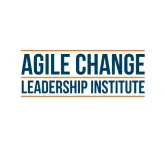Setting up a Change Management Office
Establishing an effective Change Management Office (CMO) is crucial in the dynamic landscape of organisational change. It transitions organisations from inconsistent individual projects to clearly aligned and risk-managed outcomes. At the ‘2024 Rethink Change’ conference in Sydney, Dr. Temre Green showed us the path to a strong CMO with her insights on best practices and common mistakes. She presented a clear, structured outline from a lot of data. She offered us the following.
Levers for Change Management Office Setup:
- Operating Model: The choice between centralised, embedded (decentralised), or hub-and-spoke models depends on the importance of culture, control over project delivery, and the need for consistency across change. Align this with the CMO’s funding source and reporting model.
- Funding Model: Where and when funding decisions are made impacts the CMO’s scalability and influence. Whether it’s through EPMO, business unit, or a blend, think about how the CMO will get a ‘seat at the table’, so decisions can be made early on efficient talent mixes across projects, in sync with business, and helps establish the value of the CMO.
- Extended Role: Broadening the CMO’s role to encompass scoping, prioritisation, and benefits realisation across projects is highly beneficial. The CMO can influence the entire lifecycle of projects, ensuring that resources and benefits align with the business’s timing and needs. This lever will become more critical for organisations as change saturation and fatigue heads to a tipping point.
- Framework and Toolkit: Tailoring these specifically for the CMO, rather than applying existing Project Management frameworks, promotes uniform organisational change management and role clarity. However, there may be potential ongoing costs, like certifications and maintenance.
Pitfalls to Avoid:
- Building in Isolation: Treating the setup as a standalone project rather than an integrated part of the organisation leads to disconnection.
- Unclear Customer Definition: Without proper stakeholder analysis, the CMO’s target audience and their needs remain ambiguous, particularly around funding and decision-making.
- Big Picture Neglect: Overlooking the CMO’s potential to contribute to broader organisational goals, both financially and non-financially, is a critical issue.
- Not Adding Value: Not expanding the CMO’s role to include scoping and benefits realisation misses out on proving its value.
- Inconsistent Talent Management: Variability in managing and resourcing for change talent can undermine the CMO’s effectiveness.
- Stagnant Practices: The CMO must evolve its practices to maintain consistency and quality.
- Disconnected Org Roles: Failing to bridge the business’s role and stakeholder expectations will fall short on delivery.
In the spirit of ‘Rethinking Change’, Dr. Green concluded with a thought-provoking notion: might a well-established, effective CMO transcend its cost factor by being a source of revenue itself, such as from ticket sales for a CMO’s corporate change events? An innovative approach could really redefine the CMO’s value.
Written: Rebecca King
If you’re interested in setting up a CMO at speed you may be interested in C0-founder Lena Ross’s Change Management Office in a Box, it will save you many hours!


































